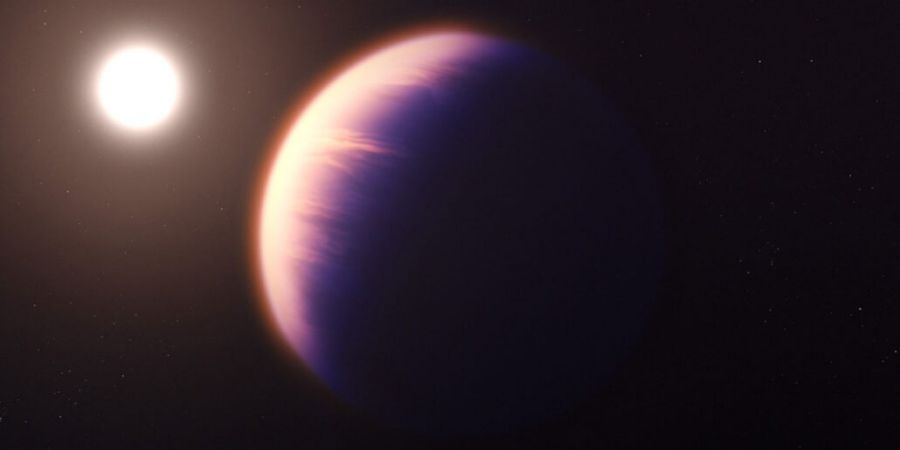

The atmosphere of a planet in another solar system has been detected for the first time by the James Webb Space Telescope.
It cannot be disputed. I can see it. Planetary scientist and research coauthor Peter Gao of the Carnegie Institution for Science in Washington, D.C., asserts that it is unquestionably present. Previous observations have shown some indications of carbon dioxide, but never to this degree.

The discovery is the first comprehensive scientific finding from the new telescope to be published, and it was uploaded to arXiv.org on August 24. Additionally, it hints at the possibility of discovering the same greenhouse gas in the atmospheres of smaller, more rocky worlds similar to Earth. The enormous, puffy planet is known as WASP-39b. It is roughly as big as Saturn and slightly broader than Jupiter. Additionally, it is extremely hot since it circles its star every four Earth days. It is a bad area to look for signs of alien life because of those characteristics (SN: 4/19/16). But because of its voluminous atmosphere and frequent transits in front of its star, it is straightforward to see, making it the ideal planet to test out the new telescope.
Launched in December 2021, the James Webb Space Telescope (JWST) began to transmit photos in July 2022 (SN: 7/11/22). In July, the planet passed in front of JWST for roughly eight hours, and the telescope saw starlight that seeped through the planet's dense atmosphere. As it happened, some wavelengths of that starlight were absorbed by carbon dioxide molecules in the atmosphere.
Only a faint amount of absorption at the same wavelength has been seen in prior studies of WASP-39b with NASA's now-defunct Spitzer Space Telescope. However, it was insufficient to persuade astronomers that carbon dioxide actually existed.
According to astronomer Nicolas Cowan of McGill University in Montreal, who was not involved with the new study, "I would not have bet more than a beer, at best a six pack, on that bizarre hesitant whiff of carbon dioxide from Spitzer." On the other side, he claims that the JWST detection "is rock solid." "I love my firstborn too much to wager on him. But I'd wager on a pleasant getaway.

The JWST data also revealed an additional amount of absorption at wavelengths that are similar to those that carbon dioxide absorbs. Astronomer Natalie Batalha of the University of California, Santa Cruz, who oversaw the team that made the observation, describes the substance as "a mystery chemical." There are a number of suspects whom we are questioning.
That's All Folks,Gratitude for Reading………




